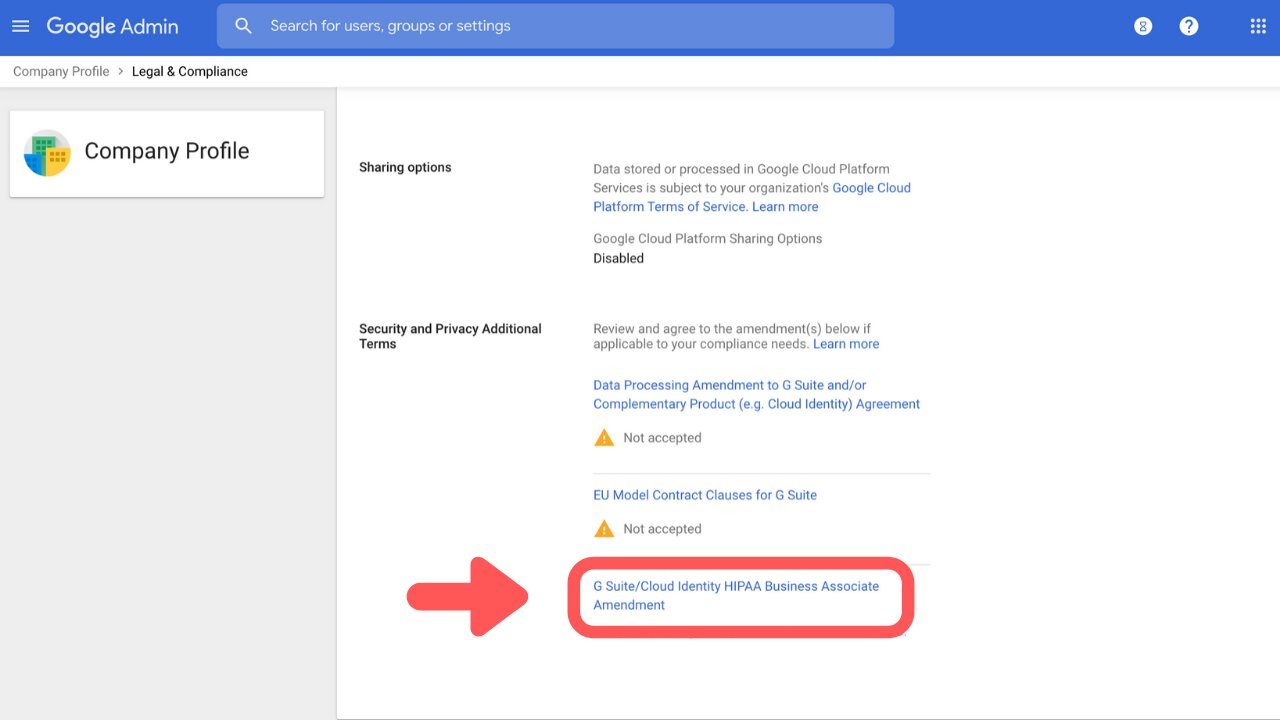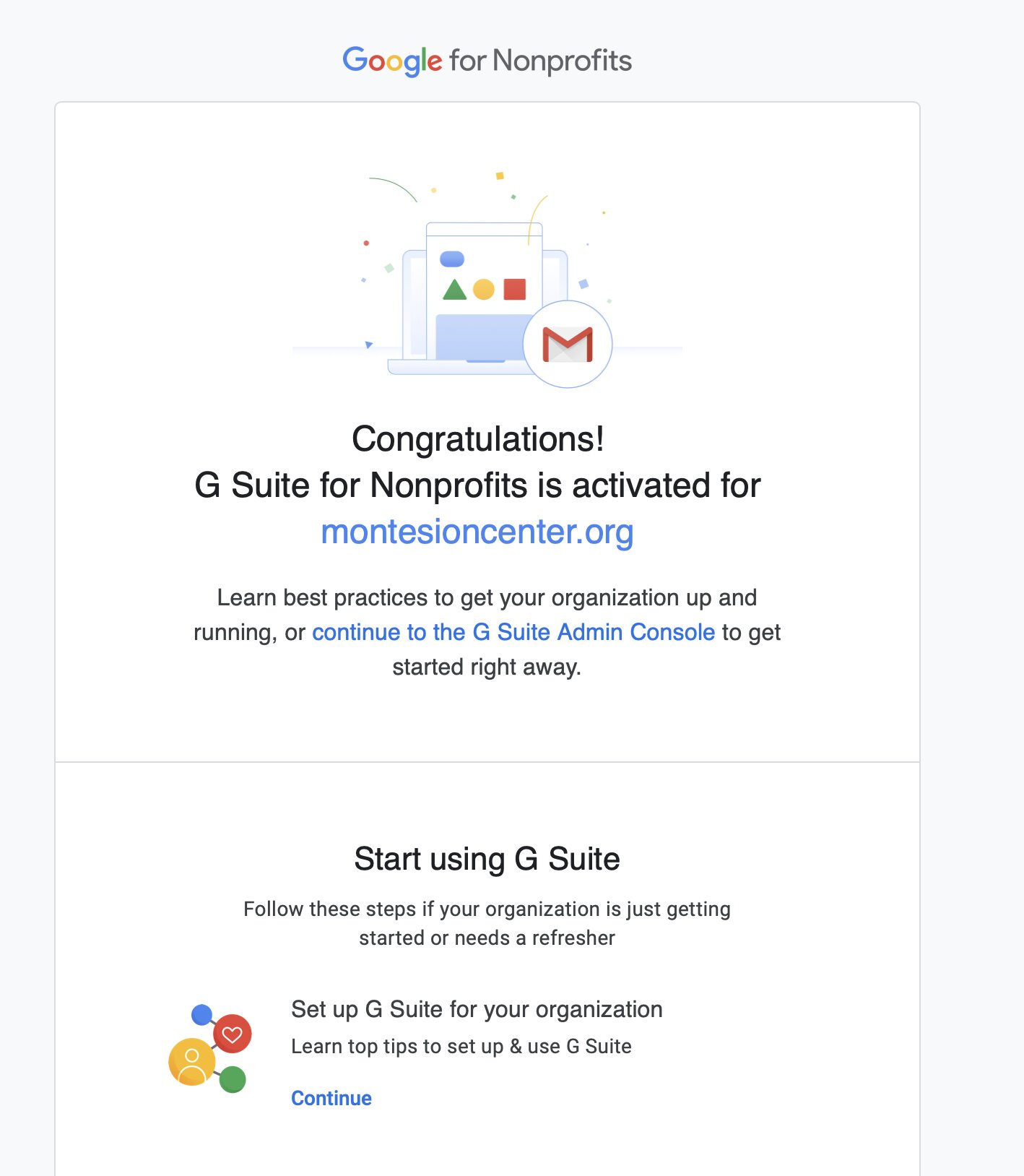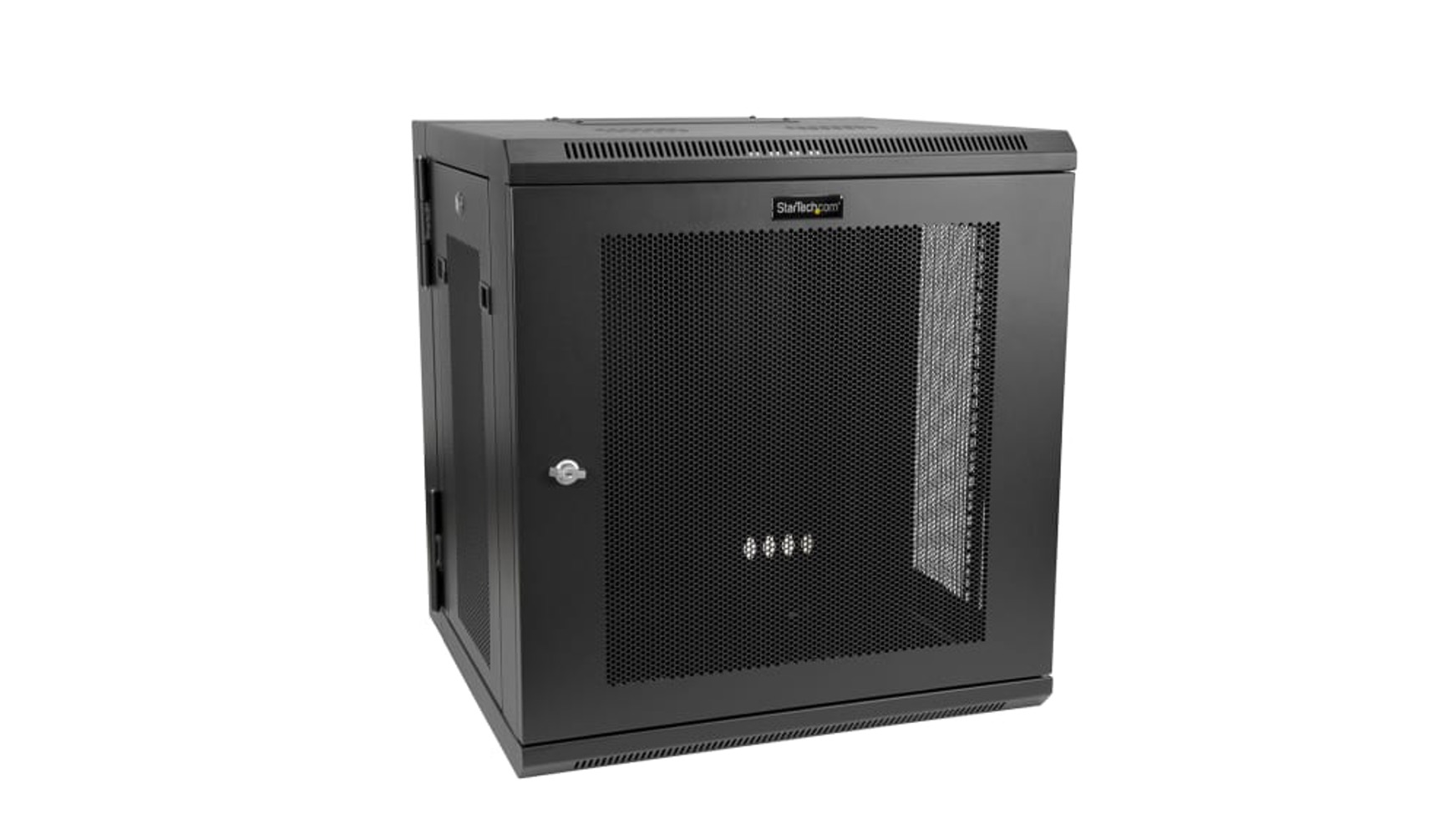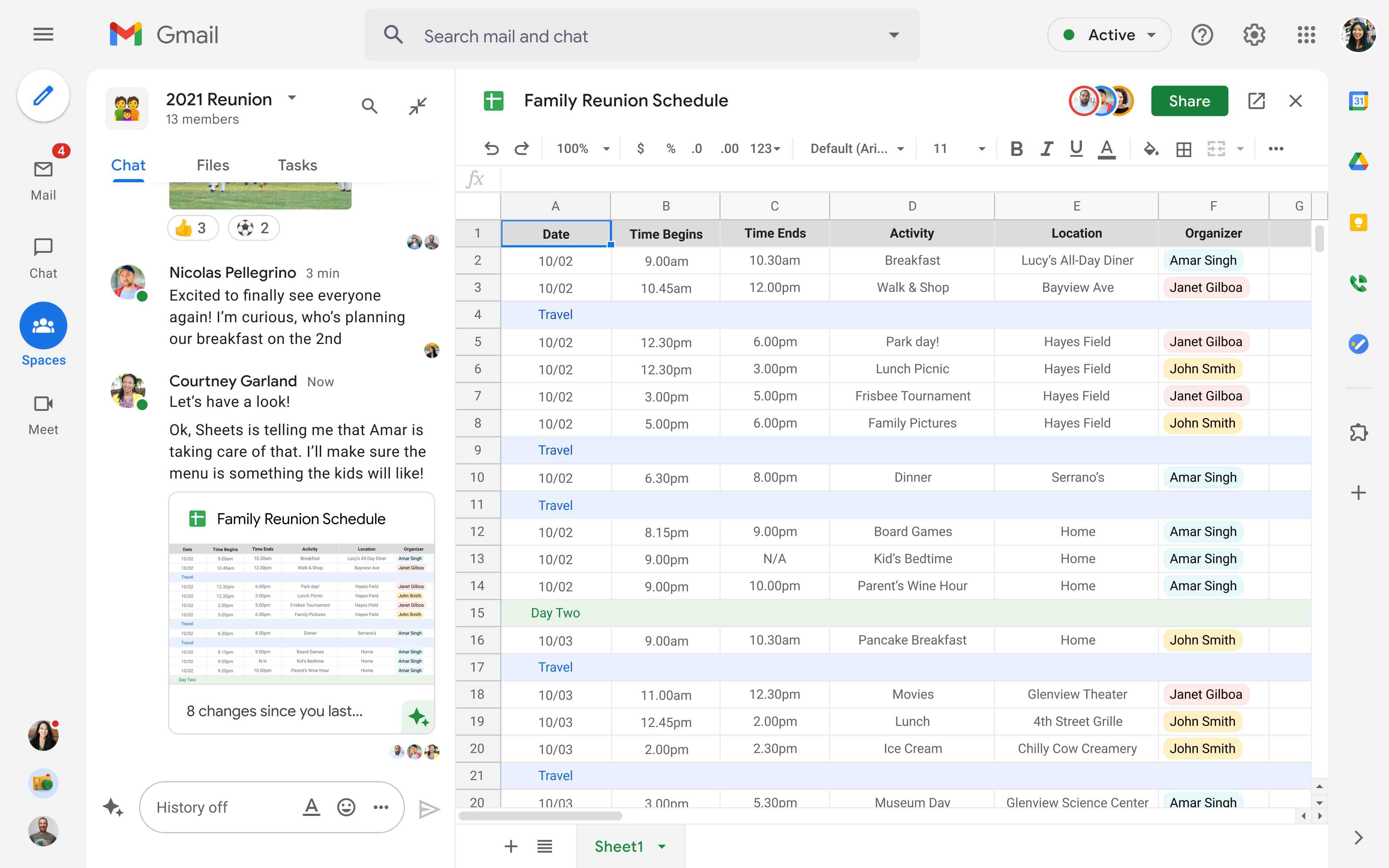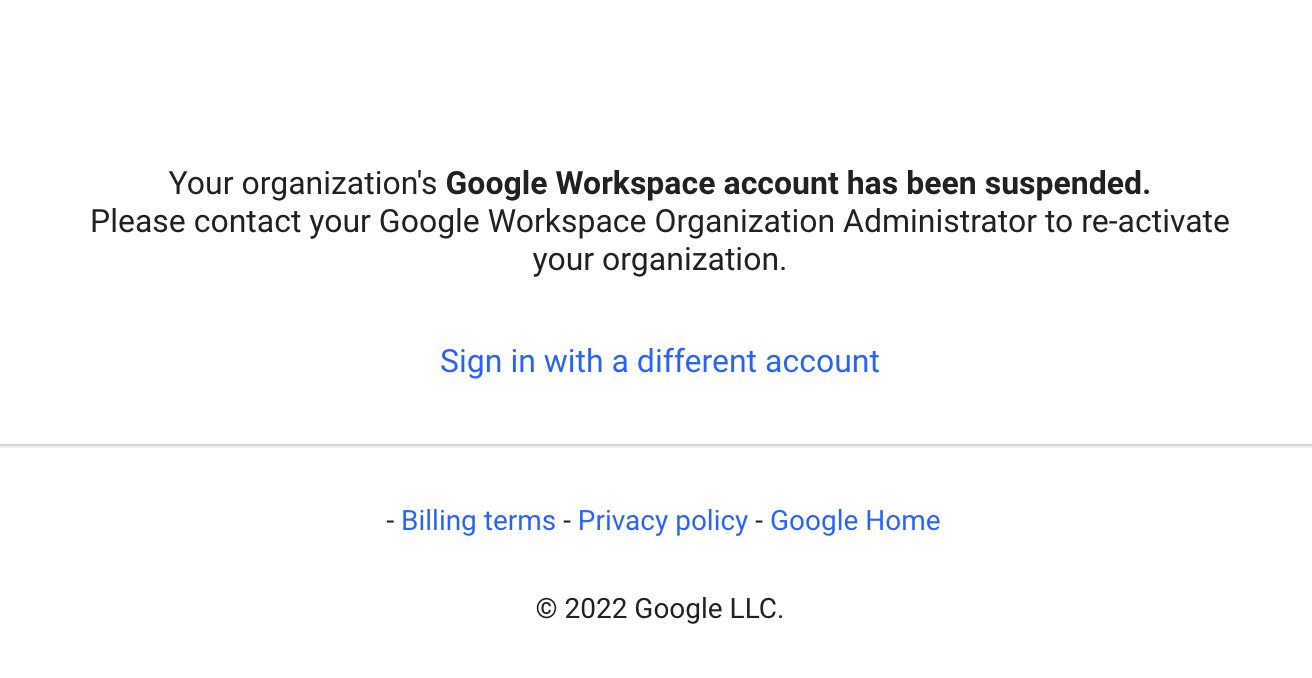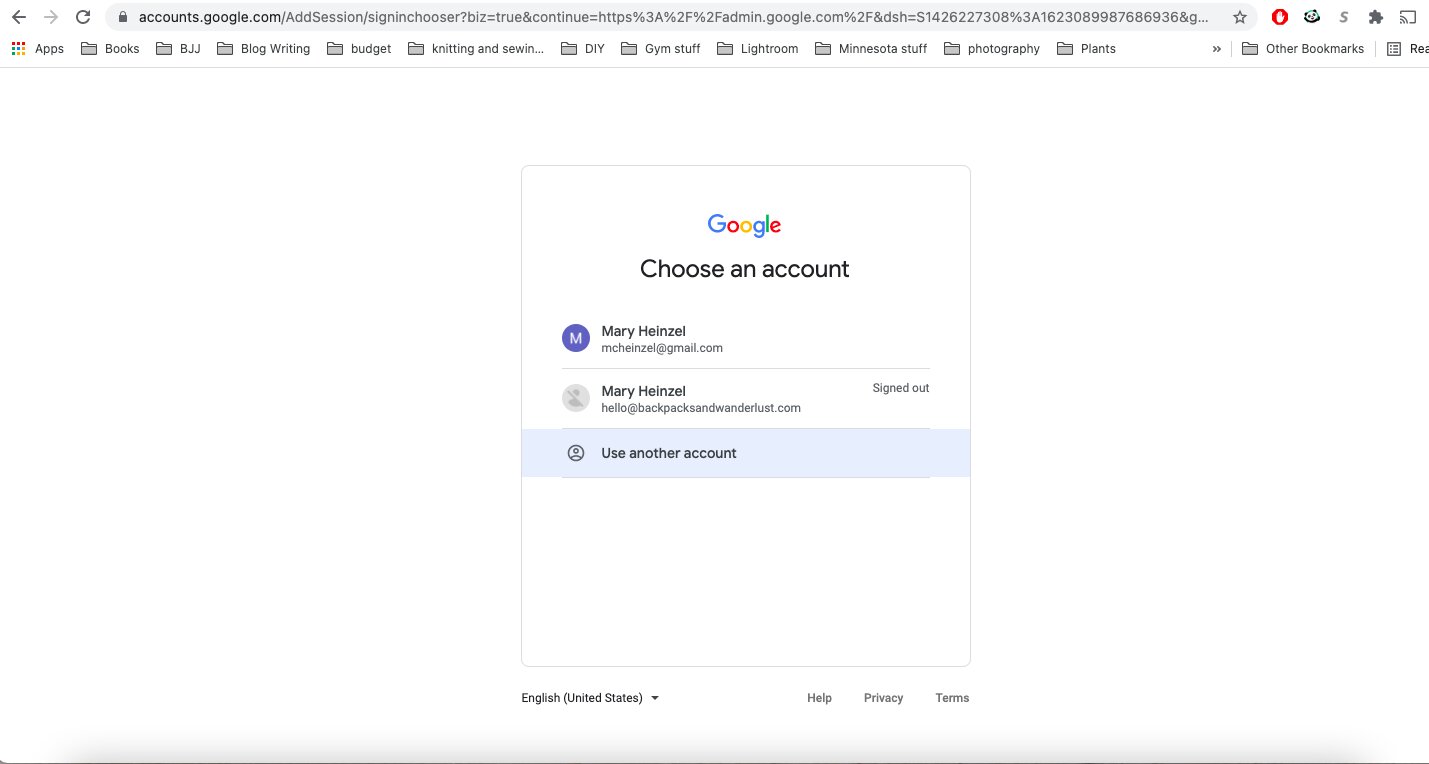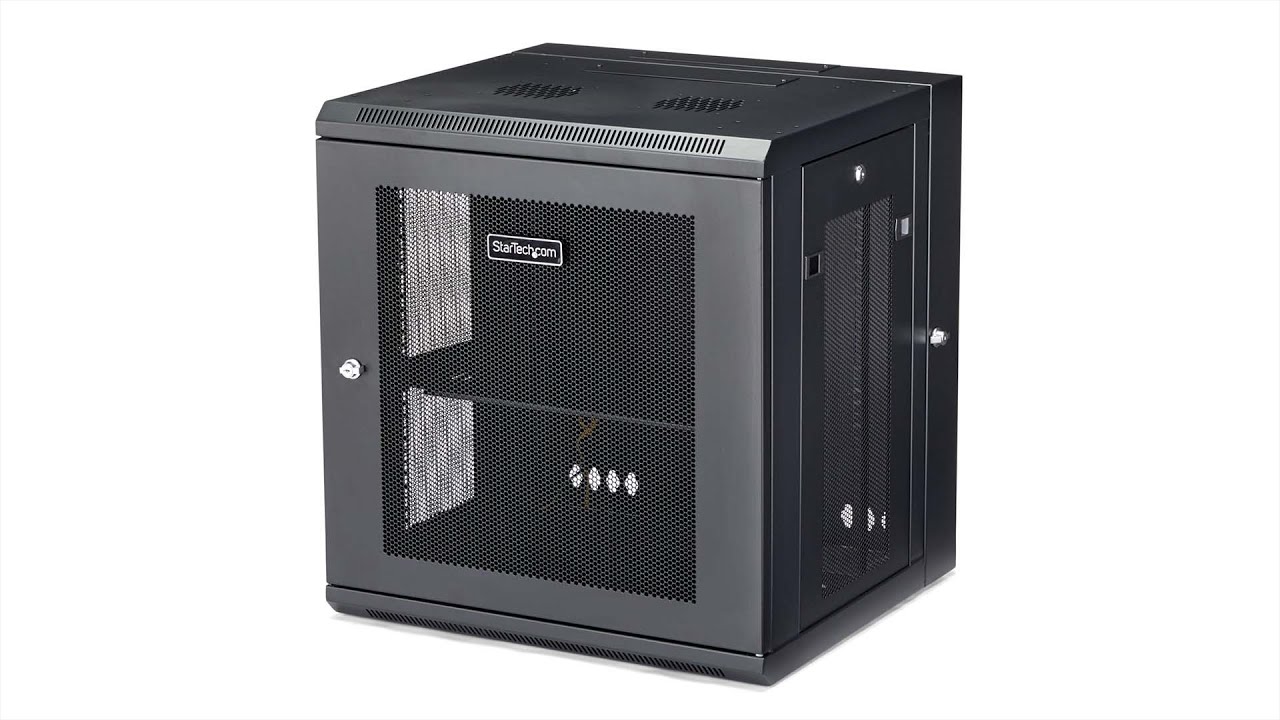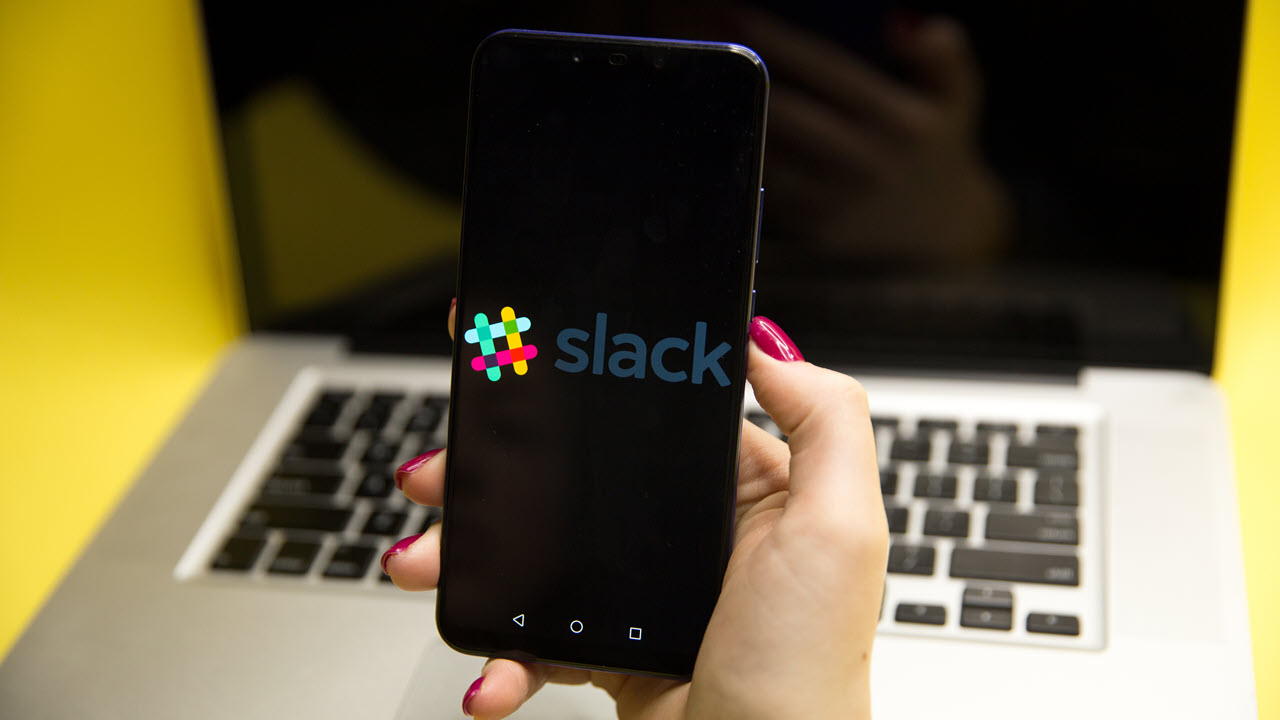Introduction
With the increasing dependence on technology in the healthcare industry, it is imperative to ensure the security and privacy of patient information. The Health Insurance Portability and Accountability Act (HIPAA) was established to establish guidelines and regulations for the protection of sensitive health information.
One of the key challenges faced by healthcare organizations is finding a reliable and secure platform to manage and store patient data. Google Workspace, formerly known as G Suite, offers a suite of productivity and collaboration tools that have gained popularity in various industries. However, to meet the stringent requirements of HIPAA compliance, healthcare organizations need to take additional steps to ensure the security and privacy of patient information within the Google Workspace environment.
This article will provide a comprehensive guide on how to make Google Workspace HIPAA compliant. We will explore the steps and measures required to protect patient information, including enabling specific features, implementing administrative controls, training employees, ensuring secure data storage and encryption, implementing access controls, regularly updating systems, and conducting regular audits and risk assessments.
By following these steps, healthcare organizations can confidently utilize Google Workspace while adhering to the regulations outlined by HIPAA. Let’s dive into the details and understand the necessary actions to achieve HIPAA compliance within the Google Workspace environment.
Understanding HIPAA Compliance
The Health Insurance Portability and Accountability Act (HIPAA) was enacted by the United States Congress in 1996 to regulate the handling of sensitive health information. The main goal of HIPAA is to ensure the confidentiality, integrity, and availability of patient data by establishing standards and guidelines for healthcare organizations.
HIPAA compliance is essential for healthcare providers, health plans, and healthcare clearinghouses who handle protected health information (PHI). PHI includes any information that can be used to identify an individual’s health condition or treatment, such as medical records, lab results, and insurance information.
There are two main components of HIPAA compliance: the Privacy Rule and the Security Rule. The Privacy Rule governs the protection of patient privacy rights, including the rights to access, review, and control the use of their health information. The Security Rule, on the other hand, focuses on the security measures that healthcare organizations must implement to protect electronic PHI (ePHI) from unauthorized access or disclosure.
Non-compliance with HIPAA regulations can result in severe consequences, including hefty fines and reputational damage. Therefore, it is crucial for healthcare organizations to have a deep understanding of HIPAA requirements and ensure that proper safeguards are in place to protect patient data.
Some of the key requirements of HIPAA compliance include:
- Implementing administrative, physical, and technical safeguards to protect patient data.
- Conducting regular risk assessments to identify vulnerabilities and address potential threats.
- Developing and implementing policies and procedures to govern the handling of patient data.
- Providing training and education to employees on HIPAA regulations and best practices.
- Ensuring the secure transmission and storage of patient data.
- Implementing access controls to restrict unauthorized access to patient information.
By understanding these requirements, healthcare organizations can take the necessary steps to achieve and maintain HIPAA compliance. In the next section, we will explore how to make Google Workspace HIPAA compliant, enabling healthcare organizations to leverage its powerful features while adhering to HIPAA regulations.
Google Workspace HIPAA Compliance
Google Workspace, formerly known as G Suite, is a cloud-based suite of productivity and collaboration tools offered by Google. It includes applications like Gmail, Google Drive, Google Docs, and Google Calendar, which have become popular among individuals and businesses across various industries.
While Google Workspace offers a range of features and benefits, healthcare organizations must ensure that the platform meets the strict requirements of HIPAA compliance. By default, Google Workspace is not HIPAA compliant, but Google offers specific features and configurations that can be enabled to make it suitable for handling ePHI.
To achieve HIPAA compliance with Google Workspace, healthcare organizations need to enter into a Business Associate Agreement (BAA) with Google. This agreement ensures that Google meets the necessary obligations required by HIPAA and provides the required safeguards for handling ePHI.
By signing the BAA, healthcare organizations can gain access to additional security controls and features in Google Workspace, which are essential for maintaining the privacy and security of patient information. These features include:
- Data Loss Prevention (DLP) policies that help prevent the accidental sharing of ePHI.
- Advanced mobile device management (MDM) options to enforce security policies on mobile devices accessing ePHI.
- Audit logs and monitoring tools to track and monitor access to ePHI.
- Encryption of data in transit and at rest to ensure the confidentiality of ePHI.
- Enhanced security measures, such as two-step verification and single sign-on (SSO), to protect against unauthorized access.
By enabling these features and implementing the necessary configurations, healthcare organizations can leverage the power of Google Workspace while ensuring compliance with HIPAA regulations. However, it is important to note that the responsibility for data protection and compliance ultimately lies with the healthcare organization.
It is crucial for healthcare organizations to regularly review and assess their Google Workspace configurations, policies, and procedures to ensure that they remain in line with HIPAA requirements. Additionally, keeping up with any updates or changes to the Google Workspace platform and its security features is essential in maintaining HIPAA compliance.
In the next section, we will discuss the steps that healthcare organizations can take to make their Google Workspace environment HIPAA compliant.
Steps to Make Google Workspace HIPAA Compliant
Making Google Workspace HIPAA compliant involves implementing specific measures and configurations to ensure the secure handling of ePHI. Here are the key steps healthcare organizations can take to achieve HIPAA compliance within their Google Workspace environment:
- Enable Google Workspace for HIPAA Compliance: The first step is to sign a Business Associate Agreement (BAA) with Google, which establishes the necessary safeguards for handling ePHI. This agreement ensures that Google meets HIPAA requirements and provides the additional security features required for compliance.
- Implement Administrative Controls: Healthcare organizations need to establish administrative policies and procedures to govern the use and access of patient information in Google Workspace. This includes designating HIPAA compliance officers, creating incident response plans, and conducting regular training and education for employees.
- Train and Educate Employees on HIPAA Guidelines: It is crucial to provide training to employees on the importance of HIPAA compliance and the proper handling of ePHI. Employees should understand their roles and responsibilities in safeguarding patient information and should be aware of the potential consequences of non-compliance.
- Secure Data Storage and Encryption: Ensure that ePHI stored in Google Drive and other Google Workspace applications is encrypted both in transit and at rest. Google Workspace provides encryption options to protect the confidentiality of patient information and prevent unauthorized access.
- Implement Access Controls and Authentication Measures: Configure access controls and authentication measures in Google Workspace to allow only authorized individuals to access ePHI. This includes strong password policies, multi-factor authentication, and regular review of user access privileges.
- Regularly Update and Patch Systems: Keep Google Workspace applications and systems up to date with the latest security patches and updates. Regularly review and assess the security configurations in Google Workspace to ensure they align with HIPAA requirements.
- Conduct Audits and Risk Assessments: Regularly review and audit your Google Workspace environment to identify any vulnerabilities or compliance gaps. Conduct risk assessments to identify potential risks and implement mitigating controls to address them.
By following these steps, healthcare organizations can ensure that their Google Workspace environment is HIPAA compliant. However, it is important to note that maintaining compliance is an ongoing effort, and organizations should regularly review and update their security measures to adapt to any changes in HIPAA regulations or Google Workspace features.
By making Google Workspace HIPAA compliant, healthcare organizations can take advantage of the collaboration and productivity benefits while maintaining the privacy and security of patient information.
Enable Google Workspace for HIPAA Compliance
The first step in making Google Workspace HIPAA compliant is to sign a Business Associate Agreement (BAA) with Google. The BAA establishes the necessary safeguards and protection measures for handling electronic Protected Health Information (ePHI) within the Google Workspace environment.
By entering into the BAA, healthcare organizations can ensure that Google meets the requirements outlined in HIPAA and provides the additional security features necessary for HIPAA compliance. It is important to note that Google only signs BAAs with organizations that have a valid business need for the use of Google Workspace in handling ePHI.
Once the BAA is in place, healthcare organizations gain access to additional security controls and features that are specifically designed to support HIPAA compliance. These features include:
- Data Loss Prevention (DLP): DLP policies allow healthcare organizations to prevent the accidental or unauthorized sharing of ePHI across various Google Workspace applications. These policies can scan for sensitive information and enforce actions such as blocking sharing or applying encryption.
- Advanced Mobile Device Management (MDM): Healthcare organizations can enforce security policies on mobile devices that access ePHI within Google Workspace. This includes features like enforcing PIN or password requirements, remote device wiping, and device encryption.
- Audit logs and monitoring: Google Workspace provides audit logs and monitoring tools to track and monitor access to ePHI. These logs help organizations detect and investigate any potential security incidents or breaches.
- Encryption: Google Workspace offers encryption of data in transit and at rest to ensure the confidentiality of ePHI. Transport Layer Security (TLS) is used to secure data during transmission, and Google’s servers store data encrypted at rest.
- Enhanced Security Measures: Google Workspace includes additional security measures such as two-step verification and single sign-on (SSO) to protect against unauthorized access to ePHI.
Enabling Google Workspace for HIPAA compliance ensures that the necessary technical and organizational safeguards are in place to protect patient information. However, it is important to note that while Google provides the tools and features for compliance, the responsibility for proper data handling and compliance ultimately lies with the healthcare organization.
By completing the necessary steps to enable Google Workspace for HIPAA compliance, healthcare organizations can leverage the collaborative and productivity benefits of the platform while maintaining the security and privacy of patient information.
Implement Administrative Controls
Implementing administrative controls is a crucial step in making Google Workspace HIPAA compliant. These controls involve the establishment of policies, procedures, and roles within the organization to ensure the proper handling and protection of ePHI within the Google Workspace environment.
Here are some key administrative controls that healthcare organizations should consider:
- Designate HIPAA Compliance Officers: Assign individuals within the organization who are responsible for overseeing HIPAA compliance efforts related to Google Workspace. These officers should have a thorough understanding of HIPAA regulations and be knowledgeable about the specific security features and configurations within Google Workspace.
- Create Incident Response Plans: Develop comprehensive incident response plans that outline the steps to be taken in the event of a security incident or a breach of ePHI. These plans should include procedures for containing and remediating the incident, as well as notifying the appropriate individuals or entities as required by HIPAA.
- Provide Employee Training and Education: Conduct regular training sessions to educate employees about the importance of HIPAA compliance and the specific requirements for handling ePHI within Google Workspace. Employees should be aware of their responsibilities in protecting patient information and the consequences of non-compliance.
- Establish Policies and Procedures: Develop and document policies and procedures that govern the use, access, and disclosure of ePHI within Google Workspace. These policies should address topics such as password management, data sharing, data retention, and employee responsibilities. Regularly review and update these policies to reflect changes in HIPAA regulations or updates to Google Workspace features.
- Ensure Business Associate Agreement (BAA) Compliance: Regularly review and assess the organization’s compliance with the terms of the BAA signed with Google. This includes ensuring that appropriate security controls are in place, monitoring access to ePHI, and conducting audits to identify any potential risks or vulnerabilities.
By implementing these administrative controls, healthcare organizations can establish a strong foundation for HIPAA compliance within the Google Workspace environment. It is important to integrate these controls into the organization’s overall HIPAA compliance program and ensure that all employees are aware of the policies and procedures in place.
Regular monitoring and review of administrative controls will help identify any gaps or areas for improvement. Healthcare organizations should stay updated with the latest developments in HIPAA regulations and Google Workspace security features to ensure ongoing compliance.
Next, we will discuss the steps to train and educate employees on HIPAA guidelines to further strengthen the organization’s HIPAA compliance efforts within Google Workspace.
Train and Educate Employees on HIPAA Guidelines
Training and educating employees on HIPAA guidelines is a critical step in ensuring compliance within the Google Workspace environment. It is essential for all healthcare organization employees to have a deep understanding of HIPAA regulations, the importance of protecting patient information, and the specific guidelines for handling ePHI within Google Workspace.
Here are key steps to train and educate employees on HIPAA guidelines:
- Create Comprehensive Training Programs: Develop comprehensive training programs that cover the basics of HIPAA regulations, the organization’s policies and procedures, and the specific requirements for handling ePHI within Google Workspace. The training programs should be tailored to different roles within the organization and be conducted regularly.
- Include Case Studies and Real-Life Scenarios: Incorporate case studies and real-life scenarios in the training programs to provide practical examples of HIPAA compliance in action. This will help employees understand how to handle common situations that may arise when working with ePHI in Google Workspace.
- Emphasize Data Privacy and Security: Educate employees on the importance of data privacy and security when working with ePHI. This includes training on how to recognize and report potential security incidents or breaches, understanding the risks associated with unauthorized access or disclosure, and following proper data handling protocols.
- Incorporate Google Workspace-Specific Training: Provide specific training on the features, settings, and security controls available in Google Workspace that help ensure compliance with HIPAA regulations. This includes topics such as data sharing permissions, data loss prevention (DLP) policies, and encryption of ePHI.
- Regularly Reinforce Training: HIPAA training should not be a one-time event. It is crucial to reinforce training periodically to ensure that employees stay updated with any changes to HIPAA regulations or Google Workspace security features. This can be achieved through refresher courses, online resources, or regular communication on HIPAA updates and best practices.
- Monitor and Evaluate Compliance: Establish processes to monitor and evaluate employees’ compliance with HIPAA guidelines within the Google Workspace environment. This can include periodic assessments, spot checks, or simulated scenarios to ensure that employees are following the proper procedures for handling ePHI. Address any identified compliance gaps or issues through additional training and corrective measures.
By investing in comprehensive training and education programs, healthcare organizations can create a culture of HIPAA compliance and ensure that employees are equipped with the knowledge and skills to handle ePHI securely within Google Workspace. Regular reinforcement and monitoring of compliance will help maintain a high level of adherence to HIPAA guidelines.
In the next section, we will discuss the steps to secure data storage and encryption within the Google Workspace environment to further strengthen HIPAA compliance efforts.
Secure Data Storage and Encryption
Securing data storage and implementing encryption measures are crucial steps in achieving HIPAA compliance within the Google Workspace environment. Healthcare organizations must ensure that electronic Protected Health Information (ePHI) stored in Google Workspace applications is protected from unauthorized access or disclosure.
Here are key steps to secure data storage and encryption:
- Enable Encryption in Transit and At Rest: Google Workspace provides encryption to protect ePHI during transmission and while at rest. Encryption in transit is achieved through Transport Layer Security (TLS), which secures data as it travels between users and Google servers. Encryption at rest ensures that ePHI is stored securely on Google’s servers.
- Use Strong Passwords and Two-Factor Authentication: Require employees to use strong passwords and implement two-factor authentication (2FA) for accessing Google Workspace accounts. This adds an extra layer of security and reduces the risk of unauthorized access to ePHI.
- Control Data Sharing and Access Permissions: Regularly review and manage data sharing settings and access permissions within Google Workspace to ensure that ePHI is only accessible to authorized individuals. Limit access to ePHI on a need-to-know basis and revoke access promptly for employees who no longer require it.
- Implement Data Loss Prevention (DLP) Policies: Utilize Google Workspace’s Data Loss Prevention (DLP) policies to prevent accidental or unauthorized sharing of ePHI. DLP policies can scan for sensitive information and enforce actions like blocking sharing or applying encryption to prevent data breaches.
- Monitor Data Activities and Access Logs: Regularly review audit logs and monitoring tools provided by Google Workspace to track and monitor access to ePHI. Establish processes to investigate any suspicious activities and ensure that access to ePHI is logged and aligned with HIPAA guidelines.
- Encrypt Mobile Devices: If healthcare organizations allow the use of mobile devices to access ePHI in Google Workspace, ensure that those devices are encrypted and protected with strong passcodes. Implement mobile device management (MDM) solutions to enforce security policies and remotely wipe devices if necessary.
- Regularly Back up Data: Implement regular data backups to create copies of ePHI stored within Google Workspace. Backups should be stored securely and tested periodically to ensure data integrity and availability for recovery purposes.
By implementing these measures, healthcare organizations can enhance the security of ePHI stored within the Google Workspace environment. It is important to regularly review and update these security measures to align with any changes in HIPAA regulations or updates to Google Workspace features.
In the next section, we will explore the steps to implement access controls and authentication measures in Google Workspace to further strengthen HIPAA compliance efforts.
Implement Access Controls and Authentication Measures
Implementing access controls and authentication measures is essential to maintaining HIPAA compliance within the Google Workspace environment. These measures help ensure that only authorized individuals have access to electronic Protected Health Information (ePHI) and prevent unauthorized access or disclosure.
Here are key steps to implement access controls and authentication measures:
- Strong Password Policies: Enforce strong password policies for Google Workspace user accounts. Require employees to create complex passwords that include a combination of uppercase and lowercase letters, numbers, and special characters. Regularly educate employees on the importance of password security and encourage them to use unique passwords for their Google Workspace accounts.
- Two-Factor Authentication (2FA): Enable two-factor authentication for all Google Workspace user accounts. 2FA adds an additional layer of security by requiring users to provide a second form of verification, such as a temporary code sent to their mobile device, in addition to their password.
- Access Control Policies: Establish access control policies that define who has access to ePHI within Google Workspace and the specific permissions granted to each user. Limit access to ePHI on a need-to-know basis, ensuring that employees only have access to the data necessary to perform their job responsibilities.
- Regular User Access Reviews: Conduct regular reviews of user access rights within Google Workspace to ensure that access privileges are up-to-date and aligned with the principle of least privilege. Remove access promptly for employees who no longer require it, such as those who have changed roles or left the organization.
- Single Sign-On (SSO): Implement single sign-on (SSO) solutions to streamline access to Google Workspace and other systems. SSO allows users to authenticate once to gain access to multiple applications, simplifying the login process while ensuring secure user authentication.
- Account Lockouts and Session Timeouts: Implement account lockouts after multiple failed login attempts and enforce session timeouts to automatically log out users after a period of inactivity. These measures help prevent unauthorized access in case of a stolen or compromised device.
By implementing these access controls and authentication measures, healthcare organizations can significantly reduce the risk of unauthorized access to ePHI within the Google Workspace environment. Regularly review and monitor access logs and user activities to detect any suspicious behavior or potential security incidents.
It is important to regularly educate employees on access control best practices and provide ongoing training to reinforce the importance of safeguarding ePHI. By ensuring strict access controls and authentication measures, healthcare organizations can maintain the confidentiality and integrity of patient information within Google Workspace.
Next, we will discuss the importance of regularly updating and patching systems to further enhance HIPAA compliance within Google Workspace.
Regularly Update and Patch Systems
Regularly updating and patching systems is a crucial step in maintaining HIPAA compliance within the Google Workspace environment. Updates and patches help address security vulnerabilities and ensure that the latest security measures are in place to protect electronic Protected Health Information (ePHI).
Here are key steps to regularly update and patch systems:
- Stay Informed: Stay up-to-date with the latest security updates, announcements, and patches released by Google Workspace. Monitor Google Workspace’s official communication channels, security bulletins, and forums to be aware of any potential vulnerabilities or updates.
- Implement a Patch Management Process: Develop a patch management process specific to Google Workspace that includes procedures for testing, deploying, and monitoring patches. This process should be documented and followed consistently to ensure that systems are kept up-to-date.
- Test Patches Before Deployment: Before deploying patches, test them in a controlled environment to ensure that they do not conflict with other systems or introduce unexpected issues. This helps minimize any potential disruptions or downtime resulting from patching.
- Apply Security Patches Promptly: Once patches have been tested and validated, apply them promptly to Google Workspace systems. Implement a schedule to review and apply patches on a regular basis, prioritizing critical and high-risk patches.
- Monitor Patch Status and Validation: Regularly monitor the patch status and validation process to ensure that all systems within the Google Workspace environment are up-to-date. Implement mechanisms to track and verify the successful application of patches.
- Manage Third-Party Applications: In addition to Google Workspace, ensure that all third-party applications used in conjunction with Google Workspace are also regularly updated and patched. Vulnerabilities in these applications can pose risks to the security of ePHI stored within Google Workspace.
- Perform Vulnerability Scans: Conduct regular vulnerability scans on systems within the Google Workspace environment to identify any potential weaknesses or vulnerabilities. Address any identified vulnerabilities promptly by applying patches or implementing additional security measures.
Regularly updating and patching systems within the Google Workspace environment is essential to mitigate security risks and ensure that ePHI remains secure. By maintaining an up-to-date system, healthcare organizations can protect against known vulnerabilities and reduce the risk of unauthorized access or data breaches.
It is important to have a documented patch management process in place and allocate responsibility to individuals or teams to ensure that the process is consistently followed. Additionally, staying informed about emerging threats and implementing patches promptly will help maintain HIPAA compliance within the Google Workspace environment.
Next, we will discuss the importance of conducting audits and risk assessments to further strengthen HIPAA compliance efforts within Google Workspace.
Conduct Audits and Risk Assessments
Conducting audits and risk assessments is essential in maintaining HIPAA compliance within the Google Workspace environment. Audits help assess compliance with HIPAA regulations, while risk assessments identify potential vulnerabilities and threats to the security of electronic Protected Health Information (ePHI).
Here are key steps to conduct audits and risk assessments:
- Establish Audit and Risk Assessment Plans: Develop documented plans outlining the scope, objectives, and methodologies for conducting audits and risk assessments within the Google Workspace environment. These plans should be based on the requirements of HIPAA and tailored to the specific needs of the healthcare organization.
- Regularly Conduct Compliance Audits: Prepare a checklist based on HIPAA regulations and guidelines to assess the organization’s compliance with specific aspects of HIPAA within the Google Workspace environment. Perform regular audits to evaluate the organization’s adherence to policies, procedures, and security measures related to ePHI.
- Perform Risk Assessments: Periodically assess potential risks and vulnerabilities within the Google Workspace environment. Identify and prioritize threats that may impact the confidentiality, integrity, and availability of ePHI. This includes evaluating physical, technical, and administrative security controls in place.
- Review Security Controls and Configurations: Regularly review and evaluate the security controls and configurations implemented within the Google Workspace environment. Ensure that they align with HIPAA requirements and provide adequate protection for ePHI. Address any identified gaps or deficiencies promptly.
- Document Findings and Remediation Actions: Document the findings from audits and risk assessments, including any identified non-compliance or vulnerabilities. Develop remediation plans to address these findings and establish timelines for implementing corrective actions.
- Monitor and Validate Corrective Actions: Regularly monitor the implementation of corrective actions to ensure that identified issues are properly addressed and resolved. Validate the effectiveness of the actions taken and document the results of the validation process.
- Stay Updated with HIPAA Regulations: Stay informed about any updates or changes to HIPAA regulations and guidelines. Regularly review and update audit and risk assessment plans to reflect any new requirements or considerations.
Conducting audits and risk assessments within the Google Workspace environment helps healthcare organizations identify areas for improvement, address non-compliance issues, and enhance the overall security posture. By proactively assessing risks and ensuring compliance with HIPAA, organizations can better protect ePHI stored within Google Workspace.
It is important to allocate resources and designate responsible individuals or teams to conduct audits and risk assessments effectively. Regular and thorough assessments will help maintain a high level of HIPAA compliance within the Google Workspace environment.
With the completion of audits and risk assessments, healthcare organizations can continue to reinforce their commitment to HIPAA compliance within the Google Workspace environment and uphold the security and privacy of ePHI.
Conclusion
Ensuring HIPAA compliance within the Google Workspace environment is crucial for healthcare organizations to protect electronic Protected Health Information (ePHI) and maintain the security and privacy of patient data. By following the steps outlined in this guide, healthcare organizations can take proactive measures to make Google Workspace HIPAA compliant.
We began by understanding the importance of HIPAA compliance and the specific requirements set forth by the Health Insurance Portability and Accountability Act. Then, we explored the features and configurations available in Google Workspace that support HIPAA compliance.
Enabling Google Workspace for HIPAA compliance by signing a Business Associate Agreement (BAA) with Google establishes the necessary safeguards for handling ePHI. Implementing administrative controls, training employees on HIPAA guidelines, and securing data storage and encryption all contribute to a secure Google Workspace environment.
By implementing access controls and authentication measures, healthcare organizations can ensure that only authorized individuals have access to ePHI. Regularly updating and patching systems, conducting audits and risk assessments, and staying informed about HIPAA regulations help maintain compliance and strengthen the overall security posture.
It is essential for healthcare organizations to remember that HIPAA compliance is an ongoing effort. Regular monitoring, training, and updating of security measures are necessary to adapt to evolving threats and changes in regulations.
By following these steps, healthcare organizations can confidently utilize the powerful features of Google Workspace while ensuring the protection of patient information. By maintaining HIPAA compliance within the Google Workspace environment, organizations demonstrate their commitment to safeguarding ePHI and prioritize the privacy and security of their patients.







